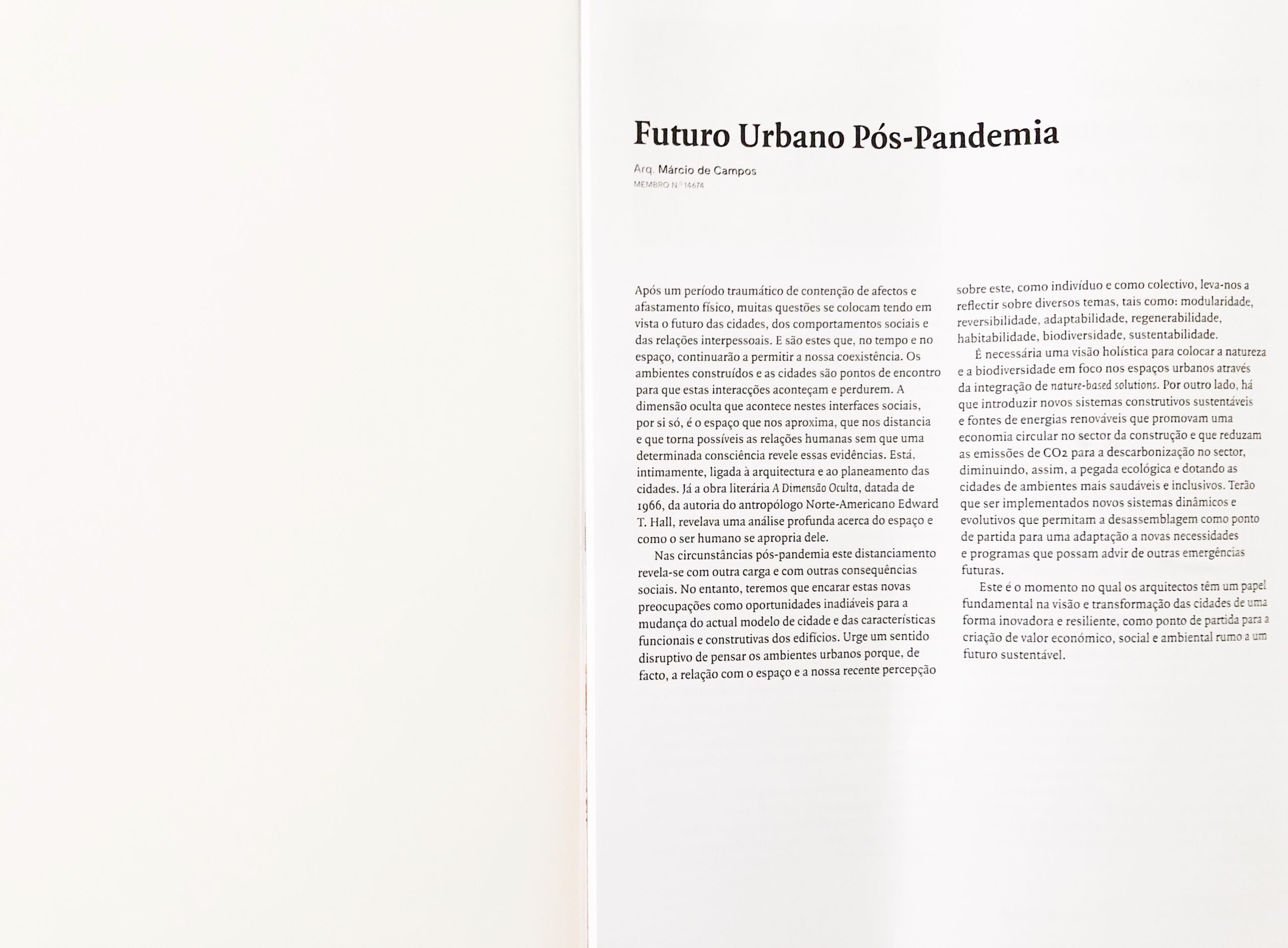Contributing to the reflection about the evolution of cities in the post-pandemic period, the opinion article post-pandemic Urban Future was published in 260 issue of Jornal Arquitectos Portuguese magazine.
“After a traumatic period of containment of affections and physical distancing, many questions arise concerning the future of cities, social behavior and interpersonal relationships. And these will, in time and space, continue to allow our coexistence. Built environments and cities are meeting points for the existence of these interactions. The hidden dimension that happens in these social interfaces, by itself, is the space that brings us closer, that distances us and that makes human relationships possible without a certain conscience revealing this evidence. It is intimately linked to the architecture and planning of cities. The literary work “The Hidden Dimension” (1966) written by the North American anthropologist Edward T. Hall, revealed a profound analysis of space and how the human being appropriates it.
In post-pandemic circumstances, this distancing reveals itself with another burden and other social consequences. However, we will have to face these new concerns as unavoidable opportunities to change the current city model and the functional and constructive characteristics of the buildings. A disruptive sense of thinking about urban environments is urgently needed because, in fact, the relationship with space and our recent perception of it, as an individual and as a collective, leads us to reflect on various themes, such as: modularity, reversibility, adaptability, regenerability, habitability, biodiversity, sustainability.
An holistic vision is needed to bring nature and biodiversity into focus in urban spaces through the integration of nature-based solutions. On the other hand, it is necessary to introduce new sustainable building systems and renewable energy sources that promote a circular economy in the construction sector and that could reduce CO2 emissions for the decarbonization in the sector, thus reducing the ecological footprint and providing cities healthier and more inclusive environments. New dynamic and evolutionary systems will have to be implemented allowing disassembly as a starting point for adapting to new needs and programs that may arise from other future emergencies.
This is the moment in which architects have a fundamental role in the vision and transformation of cities in an innovative and resilient way, as a starting point for the creation of economic, social and environmental value towards a sustainable future”.Jornal Arquitectos – June2020 / Edition 260


